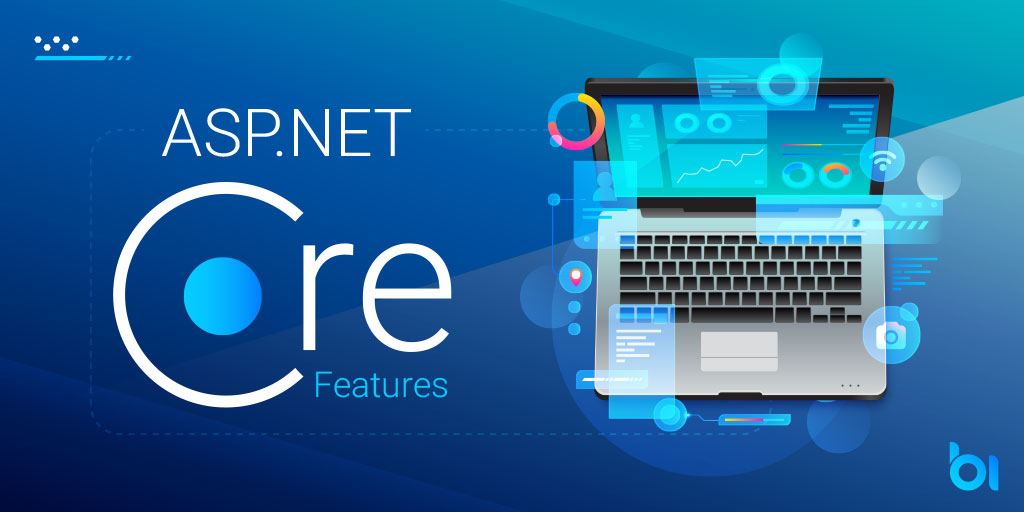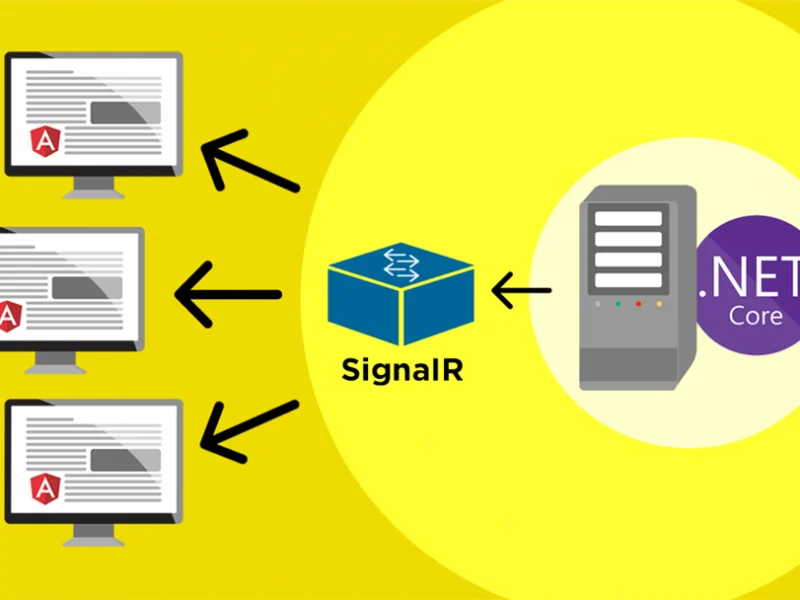The world of web development is always changing, so developers must keep up with the latest developments and adapt accordingly. Although ASP.NET MVC has long been a standard framework for creating web applications, ASP.NET Core is a compelling option with lots of benefits for contemporary development.
This tutorial examines the migration process from ASP.NET MVC to ASP.NET Core and offers the knowledge and useful steps you need to ensure a smooth transition. Discover ASP.NET Core’s benefits and improve the efficiency of your development process.
Why Move to ASP.NET Core?
Understanding the strong arguments in favor of the move to ASP.NET Core is essential before beginning the migration process:
- Cross-Platform Compatibility:
With its outstanding cross-platform compatibility, ASP.NET Core lets you run your apps on Linux, Windows, macOS, and Docker containers with ease. This gives you the ability to easily accommodate a variety of deployment scenarios and reach a larger audience.
- Performance Enhancements:
Compared to its predecessor, ASP.NET Core offers notable speed and resource efficiency improvements because it was designed from the ground up for performance. This translates to easier handling of ever-increasing traffic volumes, quicker loading times, and more seamless user experiences.
- Modular Architecture:
The modular architecture of ASP.NET Core is in contrast to that of its monolithic counterpart. With this method, you can select the parts of your project that are actually needed, making the foundation light and effective. It makes maintenance and upcoming updates easier and decreases the attack surface.
- Active Development and Community:
With Microsoft’s ongoing maintenance and enhancements, ASP.NET Core users are guaranteed access to the newest features, security updates, and bug fixes. Furthermore, the framework boasts a lively and encouraging community that provides priceless tools, support, and chances for knowledge exchange throughout your development path.

Important Factors to Know Migrate to ASP.NET Core
Even though ASP.NET Core has many advantages, it’s important to determine whether your current project is a good fit for a migration. Here are some crucial things to remember:
- Project Complexity: Migration processes are frequently more seamless in smaller, less complicated projects. On the other hand, a more methodical and phased approach is necessary for larger projects with complex dependencies in order to guarantee a smooth transition.
- Dependencies:For many applications, third-party libraries and frameworks are necessary building blocks. But not all of them might have easily accessible.Versions compatible with NET Core. Do a thorough investigation into compatibility and pinpoint viable substitutes to prevent obstacles during the migration process.
- Team Expertise:Effective migration management requires a development team with a high level of expertise. If necessary, think about upskilling your staff or enrolling them in pertinent training courses.
Migration Tools
Your migration journey can be greatly aided by the following important tools and resources:
- .NET Portability Analyzer: This useful and free tool examines the code in your project to find any possible.NET Core compatibility problems. By identifying potential obstacles early on, it helps streamline the migration process and offers helpful insights into areas that require attention.
- Visual Studio: By updating to Visual Studio’s most recent version, you can take advantage of the newest features and tooling created especially to support ASP.NET Core development. This can greatly improve your development experience and includes features like intelligent code completion, project wizards, debugging tools, and templates.
- Microsoft Documentation and Community Forums: Microsoft offers thorough documentation, including tutorials, API references, and migration guides, for every facet of ASP.NET Core development. The lively community forums provide a venue for interacting with other developers, asking for help, and exchanging knowledge, promoting a cooperative setting for learning and problem-solving.
Migration Steps ASP.NET Core
Let’s now explore the actual procedures for converting your ASP.NET MVC program to an ASP.NET Core application.
1.Create a New ASP.NET Core Project:
Open “Visual Studio” and start a fresh project for an ASP.NET Core web application. The basis of your migrated application is this project.
Choose templates now. These are a few typical choices:
- ASP.NET Core Web Application (Model-View-Controller): For projects that follow the classic MVC architecture, such as ASP.NET MVC, this template is perfect.
- ASP.NET Core Web API:This template is the best option if the main purpose of your application is to provide data via APIs.
- ASP.NET Core Empty: The greatest amount of flexibility for creating unique applications that meet your needs is provided by this template.
Note: –Choose the right template for your project when you create it, taking into account your needs.
2. Porting Your Controllers:
- Every web application’s controller handles incoming requests and directs them to the relevant logic.
- Controllers that migrate from ASP.NET MVC to ASP.NET Core must be modified to conform to the conventions and structure of the new framework.
- Although the fundamental controller structure (methods such as Index, About, etc.) stays the same, you will need to modify:
- Dependency Injection: Dependency injection plays a major role in ASP.NET Core’s object lifecycle management. To use dependency injection patterns for data access or logging services, you have to refactor your controllers.
- Middleware: Middleware is used by ASP.NET Core to manage different parts of the request processing pipeline. For tasks like authorization or authentication, you should modify your controllers so they can communicate with the appropriate middleware components.
- Routing: In ASP.NET Core, routing patterns have changed over time. The fundamental ideas are still the same, but the syntax and configuration are a little different.
3. Migrating Views:
Views, as everyone knows, are in charge of displaying the user interface (UI) of the application. Depending on the method you select, moving from Razor syntax to either Razor Pages or ASP.NET Core MVC views is the usual step in migrating views from ASP.NET MVC:
- Razor Pages: By consolidating model and view logic into a single file, this method streamlines view logic. Smaller views or views requiring less server-side processing may benefit the most from it.
- ASP.NET Core MVC Views: These viewpoints maintain the distinction between model and view logic, providing a more conventional division of concerns. For intricate user interfaces, this method offers more flexibility and control.
Note: – Whichever strategy you decide on, make sure your views are modified to make use of the proper ASP.NET Core-specific syntax and components.
4. Refactoring Data Access:
- If you use Entity Framework (EF) in your application to access data, you need to update your project to the most recent EF Core version.
- This guarantees ASP.NET Core compatibility and grants access to the newest EF version’s enhanced features and performance.
- The migration process for EF typically involves the following:
- NuGet packages are being updated with the relevant EF Core version.
- Your data access code is modified to make use of the EF Core APIs and syntax. Changes to entity models, data access logic, and connection strings may be necessary for this.
Note: –If necessary, you can perform database migrations to update your database schema to reflect the modifications made to your updated EF Core models.
5. Updating Configuration:
Application configuration is crucial in defining various settings and parameters. In ASP.NET MVC, configuration typically resides in the web.config file. ASP.NET Core utilizes a different approach, primarily relying on:
- appsettings.json: Numerous application settings and configuration values are kept in this JSON file.
- Environment Variables:To improve security and configuration management, it is advised to use environment variables for sensitive data such as connection strings or API keys.
Note: – To ensure your application functions are as expected, migrate your configuration settings from web.config to the appropriate mechanisms used in ASP.NET Core.
6. Addressing Dependencies:
Modern web applications frequently require third-party libraries and frameworks as fundamental building blocks. It’s possible, though, that not all dependencies are currently readily available.Versions compatible with NET Core. Here’s how to deal with these circumstances:
- Research Compatibility:Make sure your current dependencies are compatible with.NET Core by doing a thorough investigation. You can seamlessly integrate.NET Core versions of many popular libraries into your migrated application.
- Seek Alternatives: Investigate substitute libraries that provide comparable features and are compatible with.NET Core if versions that are compatible are not available. The feature set, user community, and ease of use should all be taken into account when choosing an alternative.
- Engage with Maintainers: The desired library may occasionally have an active community or maintainers but not a.NET Core version. You could try reaching out to the maintainers and letting them know you’re interested in a.NET Core version.
Note: –Answers from maintainers may offer different approaches or insightful information about possible future support.
7. Testing and Deployment:
- Rigorous Testing:Make sure everything works as it should by carefully testing your application at every turn during the migration process. Unit, integration, and end-to-end tests are included in this to confirm the general functionality of the application and find any potential regressions brought about by the migration.
- Deployment Considerations: Once you are satisfied with the functionality of your migrated application, get ready to deploy it to the hosting environment of your choice.
Note:Updates to deployment scripts, configuration files, and environment-specific settings may be necessary to guarantee a seamless transfer to the production environment.
Benefits Using ASP.NET Core
There are many benefits to moving to ASP.NET Core that extend beyond the initial transition period. The following crucial elements can be utilized to improve your application and development experience:
- Simplified Development:The modular architecture and simplified syntax of ASP.NET Core make development more effective and pleasurable. As a result, developers can concentrate on essential features and produce solutions more quickly.
- Enhanced Security: By including features like built-in defense mechanisms against common vulnerabilities, ASP.NET Core prioritizes security. It also makes user authentication procedures easier, which promotes a more secure development environment and lowers the possibility of potential exploits.
- Modern Tooling and Libraries: An extensive collection of contemporary tools and libraries is available to ASP.NET Core. These include libraries like ASP.NET Core Identity for smooth user management functionalities and tools like the.NET CLI for streamlined project management. With the aid of these tools, developers can create reliable and effective applications more quickly.
- Cloud-based Deployment:The architecture of ASP.NET Core is perfectly compatible with cloud-based deployments. Because of its cross-platform compatibility and lightweight design, it’s a great option for developing cloud-native apps that take advantage of the scalability and flexibility provided by cloud providers.
That’s all we have to say about this blog; this extensive guide gives you the information and instructions you need to switch from ASP.NET MVC to ASP.NET Core, opening the door to a more effective, safe, and future-proof development process.
Conclusion
Recall that a successful migration necessitates careful planning, skillful execution, and a dedication to lifelong learning. A dedication to continuous learning, meticulous execution, and careful planning are necessary when transitioning from ASP.NET MVC to ASP.NET Core.
Nonetheless, the advantages of this shift make the expenditure worthwhile. You can safely navigate the migration process and open up a world of possibilities with ASP.NET Core by adopting the tools, resources, and best practices described in this guide.
Ready to migrate to ASP.NET Core? We provide everything you need, from developer-made tools like Git integration and access managers for user management to basic features like a free domain name, unlimited bandwidth, and free SSL.
Make the switch to ASPHostPortal right now to see the difference for yourself.

Yury Sobolev is Full Stack Software Developer by passion and profession working on Microsoft ASP.NET Core. Also he has hands-on experience on working with Angular, Backbone, React, ASP.NET Core Web API, Restful Web Services, WCF, SQL Server.



